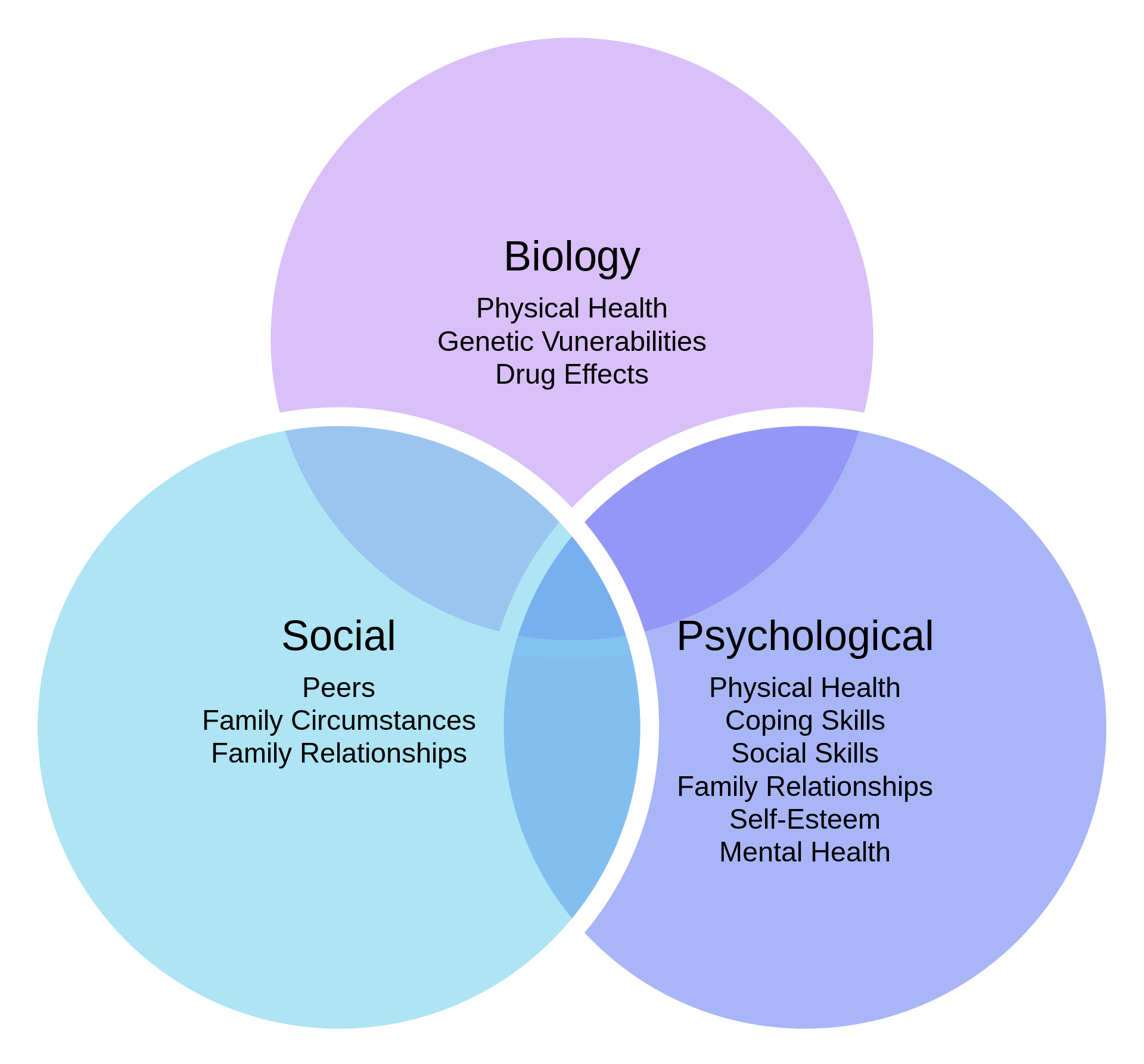Integrative Themes in Focus
APA Theme C says “Psychological, biological, social, and cultural factors influence behavior and mental processes.”

APA Theme C focuses on how an array of influences shapes behavior and mental processes:
- Psychological Factors: Inner workings like emotions, cognition, and personality traits.
- Biological Factors: Genetics, brain structures, and neurochemical processes.
- Social Factors: Social interactions, norms, and relationships.
- Cultural Factors: Cultural norms, values, and traditions.
This theme emphasizes the intricate interactions between different factors that can influence behavior and mental processes. In Dr. Twenge’s study on rejection and aggression, she focused specifically on the role of social factors (rejection and acceptance among peers) in shaping psychological states (feelings of rejection and anger) and the subsequent behaviors (aggression).
Dr. Twenge’s experiment did not investigate biological or cultural factors directly, but it did incorporate a strong social and psychological aspect.
Students’ perceived social status (feeling accepted or rejected by peers) was manipulated in a lab setting, which directly influenced their emotional state and behaviors. The data from the experiment suggest that social influences—such as feeling rejected—can significantly impact individuals’ behaviors, in this case, leading to increased aggression.

This theme also connects to many other areas of psychology. For example, the way a person develops is influenced by psychological factors (like cognitive and emotional development), biological factors (like genetic predispositions), social factors (like the family environment and socialization processes), and cultural factors (like the values and norms of the society in which they are raised).